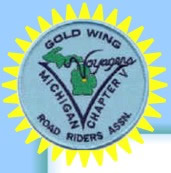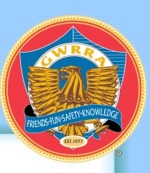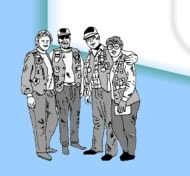By James R. Davis
2-Second Rule
A message was posted in a motorcycle
conference recently which argued that we
should abandon the '2-second' rule (distance
between bikes in the same track - distance
between each bike in the group being half
that) and possibly double it to increase
safety.
Yes, that will certainly increase safety,
generally, but it results in a group that is
spread so far out that it introduces new
safety problems - like it encourages cagers
to dart into the gaps between bikes. But
there are times where the '2 -second' rule
makes no sense whatever. To begin with, it
must be realized that there is a set of
implicit assumptions that goes along with
adopting that rule. Most important of these
is that the skills/experience level of the
individual riders is about at par with each
other. Additionally, but often overlooked,
is the absolute assumption that you are
riding on dry level pavement!
It has been well documented that it takes
the average person almost 1 full second to
recognize and then to react to an UNEXPECTED
threat. (About 1/2 second if the threat is
anticipated.) The '2-second Rule', in other
words, provides 1 full second of distance
between bikes in order to provide sufficient
time for following bikers to recognize and
react to unexpected threats.
If all bikers in the group have roughly
equivalent skills, then no matter what the
driver ahead of you does - so long as he
REMAINS IN CONTROL OF HIS BIKE - you should
be able to do the same without running into
him. This is true whether you are on wet or
dry pavement and regardless of any pavement
slope you are on.
However, the bike ahead of you is not the
only thing that you might have to
avoid hitting. Going down hill or riding on
wet surfaces dramatically increases your
stopping distance and is important should
you have to avoid an obstacle in the road
(pothole or vehicle), or the bike ahead of
you that is no longer in control (highsided,
for example.)
Since your tire traction is cut by as much
as TWO-THIRDS on wet roads, clearly you
should increase following distances
substantially over what is safe on dry level
roads. Similarly, sand or gravel covered
roadways should cause you to stretch out
those following distances.
Since gravity either aids or detracts from
the ability of your brakes to stop your bike
based on whether you are on an incline or a
decline, following distances must be
significantly increased to maintain the
safety margin if you are riding downhill -
and the steeper the slope, the wider those
distances should be.
When riding in a curve most motorcyclists
choose their own line and certainly
should not be 'required' to stay in their
track (though they should stay in their
lane,
of course.) It follows, then, that distances
between bikes should be nearly doubled
when riding twisties.
If the bike ahead of you does not remain in
control, then you need to be able to avoid
hitting him without doing whatever got him
into trouble (such as hitting something in
the road.) In low traction environments (or
going downhill) you
need more time and distance.
The '2-second rule' means that in staggered
formation there is a ONE second spacing
between each bike, thus a TWO second spacing
between bikes in the same track.
My intention in this discussion is to
demonstrate that if you use this kind of
spacing then:
|
IF your reaction time to an
unexpected threat is 1 second or
less (studies have shown this to be
a reasonable expectation),
and |
|
|
IF your motorcycle skills are as
good or better than those of the
next driver ahead of you,
|
Then whatever the motorcyclist ahead of you
does you should be able to do without
running into him. (Including a panic stop,
or a turn across your path, or both.)
All else being equal, the "2-second rule"
should constitute your fundamental
safety margin while riding in a
group if you use it as a minimum
spacing distance.
This does not mean it is impossible to hit
the guy ahead of you if he loses control of
his bike! If he T-bones a vehicle that
enters an intersection, you will almost
certainly run into them. If he locks his
rear brake and then highsides, you might run
into him.
But running into the bike ahead is not your
only threat. If that bike successfully
dodges an obstacle in the street, you could
hit it rather than him. If a deer or another
vehicle happens to run into the gap between
you and the bike ahead, you need
stopping/swerving ability.
Since wet surfaces or driving down a hill
decreases stopping ability, it makes sense
to widen the gaps between bikes when you
have to deal with them. Not so that you can
avoid hitting the bike ahead of you if he
remains in control of his bike, but because
he might not, or other panic stop conditions
might arise. |











